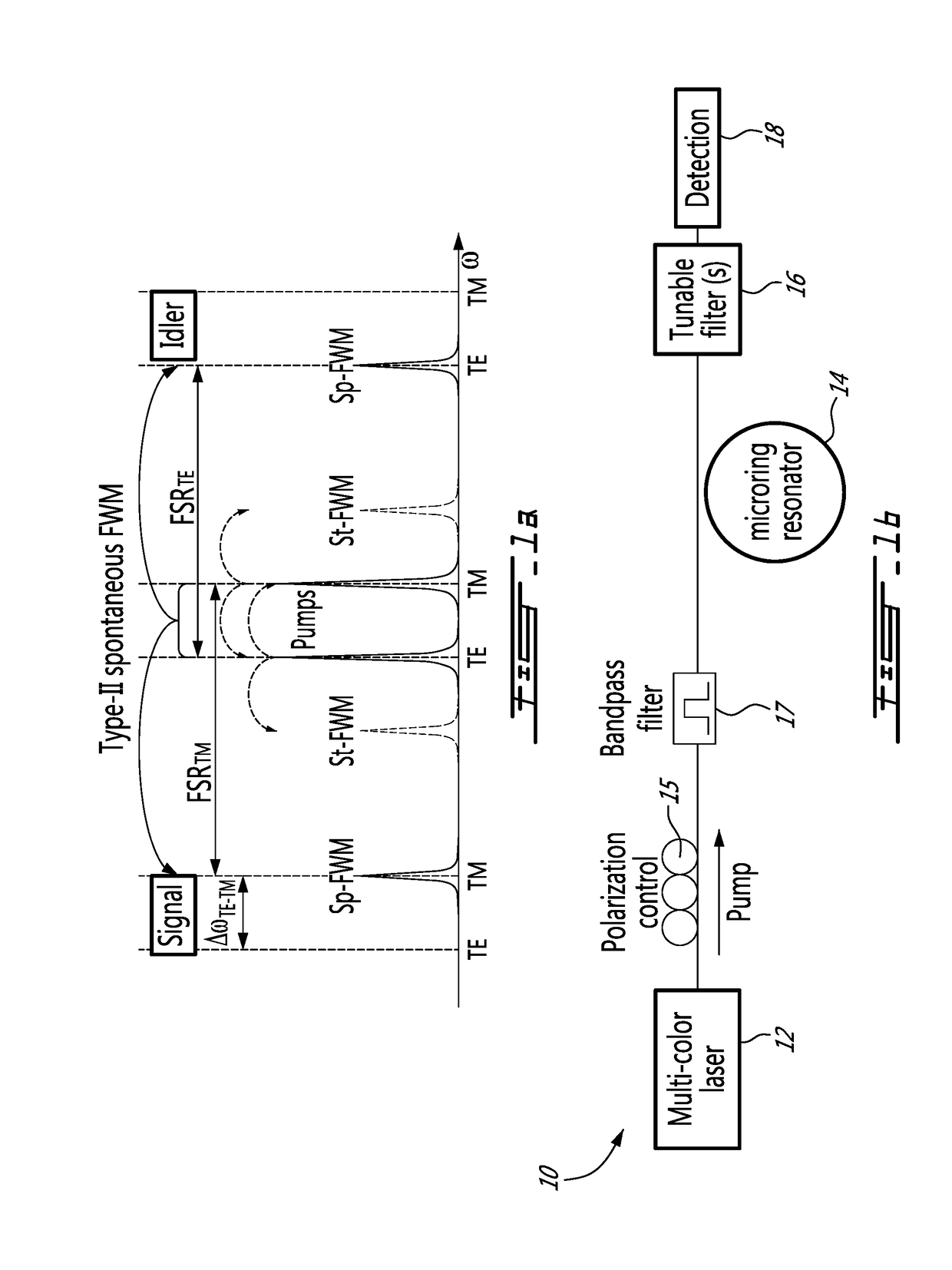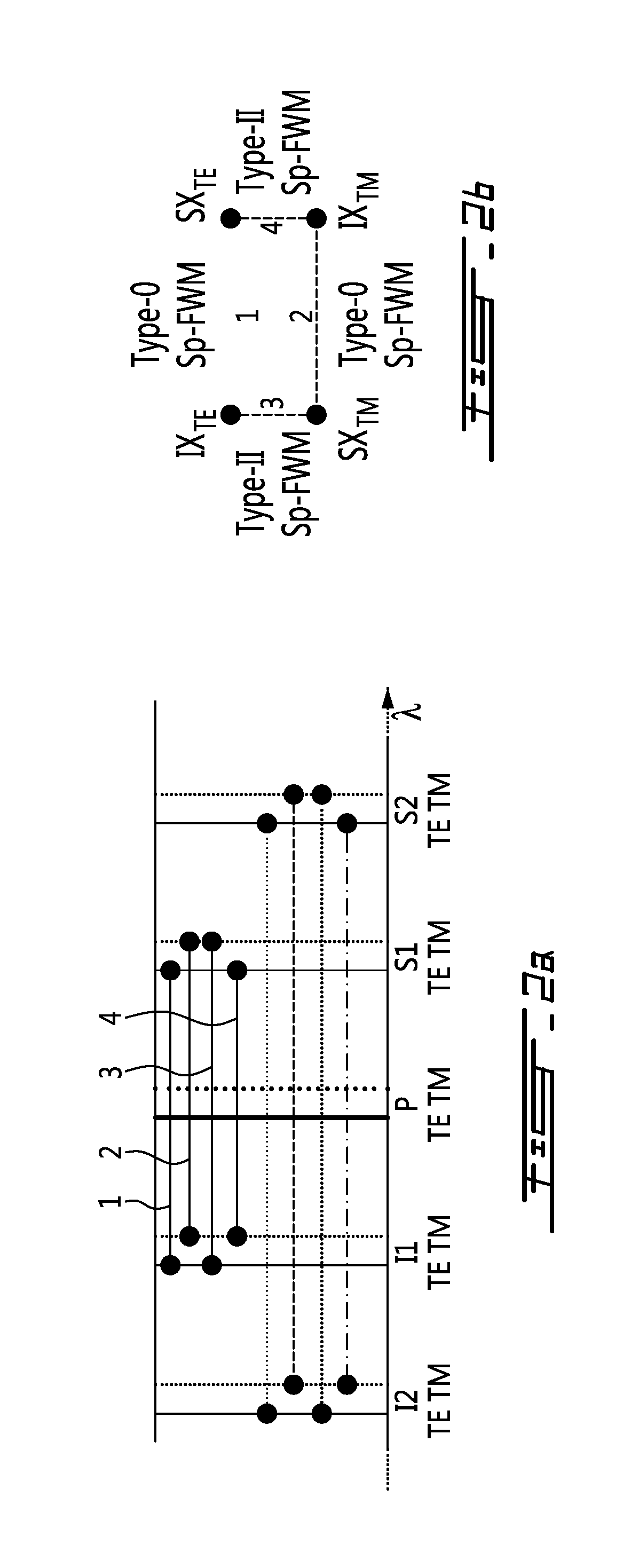Method and system for the generation of optical multipartite quantum states
a multi-partite quantum state and optical technology, applied in the field of multi-partite optical quantum states, can solve the problems of large and complex optical setups, difficult to achieve, and difficult to achiev
- Summary
- Abstract
- Description
- Claims
- Application Information
AI Technical Summary
Benefits of technology
Problems solved by technology
Method used
Image
Examples
Embodiment Construction
[0032]There is generally presented a method and a system for generating and controlling multi-correlated, multi-photon, multi-mode entangled quantum optical states in third-order nonlinear resonant structures.
[0033]The third-order nonlinear resonant structures may be birefringent and / or mode-dispersive resonators, characterized by multiple mode families.
[0034]The method and the system use at least two different spontaneous four-wave mixing processes (Sp-FWM), for example a degenerate Sp-FWM and a non-degenerate Sp-FWM or two non-degenerate Sp-FWM and three different mode families, in such a way as to radiate the optical fields spontaneously generated from these different processes into a same resonator mode. Radiation of the different nonlinear processes in the same resonator mode introduces quantum correlations of the optical states generated in one resonator mode with those generated in at least two other resonator modes.
[0035]In the context of quantum state generation, these gene...
PUM
 Login to View More
Login to View More Abstract
Description
Claims
Application Information
 Login to View More
Login to View More - R&D
- Intellectual Property
- Life Sciences
- Materials
- Tech Scout
- Unparalleled Data Quality
- Higher Quality Content
- 60% Fewer Hallucinations
Browse by: Latest US Patents, China's latest patents, Technical Efficacy Thesaurus, Application Domain, Technology Topic, Popular Technical Reports.
© 2025 PatSnap. All rights reserved.Legal|Privacy policy|Modern Slavery Act Transparency Statement|Sitemap|About US| Contact US: help@patsnap.com



